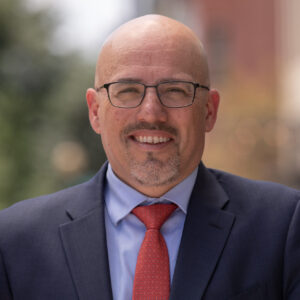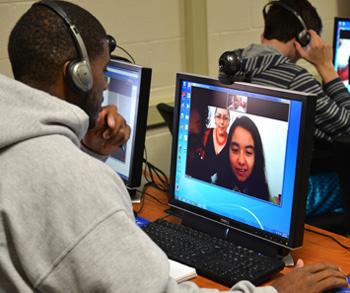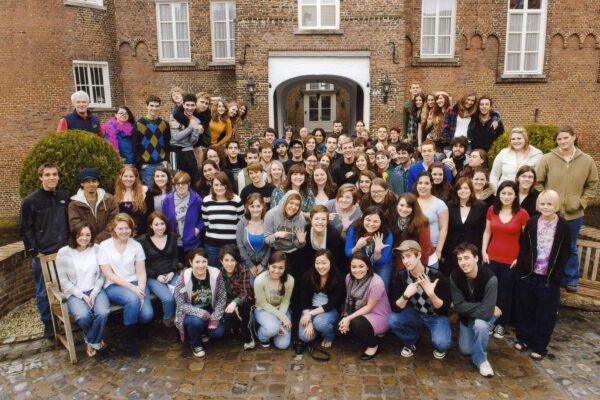This is the third piece in a series focused on exploring the concept of a postsecondary learning ecosystem—one that includes not only traditional higher education institutions but also alternative providers that connect learners to the labor market, either independently or in partnership with colleges and universities. Read posts one and two.
Higher education leaders face profound questions today about the future of their institutions and the students they serve. With the Higher Education Emergency Relief Funds from the U.S. Department of Education nearly spent and enrollment failing to rebound to pre-pandemic levels, institutions must determine how to retain students who are already on campus as well as attract new learners.
To respond to these challenges, many campus leaders are looking toward broad institutional transformation—and that seems to be a daunting undertaking, one that would require significant foundational shifts in a college’s mission and vision. It also can be expensive. New programs can take millions of dollars and multiple years to develop. New modalities often require substantial investments in infrastructure and redesigned support services to enhance digital teaching and learning. Many institutional leaders are tempted to raise prices to pay for it all. But doing so can undermine the ability to recruit and retain students and thwart a bold campus transformation before it has the chance to take root.
Business model analysis and the learning ecosystem
Consistently knowing if and when to engage alternative providers in the learning ecosystem requires a deep understanding of the college and university business model. For busy campus leaders, understanding how academic programs, delivery modalities, enrollment opportunities, and pricing/revenue formulas are aligned to a unique value proposition informs not only good business practices but also where partnerships can enhance or create value propositions. The Simplified College Business Model, adapted from ACE’s Evolving Higher Education Business Models: Leading with Data to Deliver Results (2016), provides a quick reference.
This model has four components:
- Value proposition. Value propositions are specific to different types of students—traditional, residential, adult, and online learners. Colleges and universities address the targeted students’ needs through their academic programs and services and ascertain how those will be accessed and priced.
- Resources. The value proposition, in turn, helps determine the mix of faculty, staff, technology, products, partners, facilities, and equipment that are necessary to meet student needs.
- Processes. Resources are then applied in specific ways to deliver on the value proposition. Over time, these recurrent ways of working together become formal processes. In higher education, processes include shared governance, degree programs, advising, transfer of credit, financial aid, cross-subsidy, and professional development.
- Revenue/subsidy formula. Colleges and universities must generate enough revenue to cover the costs of delivering their services, including the associated pricing strategy. A revenue/subsidy formula can help institutions to determine this amount.
Course sharing and the learning ecosystem in action
To illustrate this approach, let’s walk through a specific case of course sharing across institutions through Acadeum, an alternative provider. Course sharing allows students from one institution to attend classes either in person or virtually at another college—or even multiple colleges—within a collaborative network. The credits students earn are applied toward their respective majors and degrees at their home institutions.
From a business model perspective, the value proposition for students of course sharing is that it can eliminate scheduling obstacles and help students to overcome academic setbacks that could potentially hinder timely graduation. For colleges and universities, course sharing makes scheduling more efficient and contributes to student retention and graduation rates.
In this example, the resources and processes components allow us to see partnerships, online education, transfer of credit, and advising in new ways so that institutions can contain costs. As we continue to move through the business model, improved student outcomes and institutional performance create a new sustainable revenue/subsidy formula supported by an interdependent partner.
Course-sharing consortia have existed for decades. But in an era of rising expenses, declining enrollments, and severe underuse of classroom space, institutions are increasingly interested in the concept. Further, new technologies have enabled course-sharing networks to scale far beyond their traditional geographic constraints.
Acadeum, used herein as an alternative provider example, has created a large course-sharing network with more than 460 four-year universities and community colleges across the nation. Participating institutions have seen clear growth. Interinstitutional enrollment generated through course sharing using the Acadeum platform has increased by an average of 52 percent annually since 2019. Learners are completing these courses at a rate of 94 percent. So, the partnership across the network of institutions and their related processes for enrolling students, documenting performance, and conferring credit toward a credential is being leveraged to improve financial sustainability.
One of the more promising examples of course sharing is an emerging network between Acadeum and the Southern Regional Education Board (SREB)—the HBCU-MSI Consortium, formed in March 2022. SREB works to improve education at every level in 16 states. SREB and Acadeum formed this partnership to create a course-sharing network between Historically Black Colleges and Universities (HBCUs) and other minority serving institutions (MSIs) in the region. The intent of this consortium is to increase equity and access to rich coursework, make it easier for students to recover lost credits, and give students more opportunities to take classes that are unavailable at their home campuses. The ultimate goal is to help more students complete college on time.
In the new network’s first year, member institutions shared nearly 1,500 seats and eliminated nearly 800 course-availability roadblocks for students. By leveraging available classroom capacity, the institutions saved nearly $1 million in adjunct instructional costs—not an insignificant sum for a sector of American higher education that has been underfunded for decades.
The following are a few other examples of the business model and student success benefits of course sharing from participating in large online consortia:
- Angelo State University in Texas retained 200 students and recovered $500,000 in tuition revenue in two years after joining a course-sharing network.
- The University of Mount Union used course sharing to help students earn 500 credits over two summer terms. The Ohio institution leveraged the network into summer-term enrollment growth of 50 percent and additional revenue of $866,000.
- Goldey-Beacom College in Delaware recovered more than $275,000 in net tuition revenue because the network allowed them to connect more than 300 students to courses that they needed to stay on track to graduate. By tapping into a large online catalog, the college posted its highest first-year student retention rate in 20 years.
Alternative providers and innovation
Based on its services, Acadeum would occupy the top-right quadrant in the following map of the learning ecosystem—high in collaborative approach and supplementing content/delivery across a network of higher education institutions.
This interdependence forms the foundation of the innovation required to move the needle for many postsecondary institutions as they seek sustainable business models in this new environment of shrinking enrollments. Importantly, innovation doesn’t always mean a complete transformation that takes more time and money than most institutions possess. It can mean leveraging alternative providers in the postsecondary learning ecosystem with consideration toward interdependently generated quality and affordability.
If you have any questions or comments about this blog post, please contact us.



